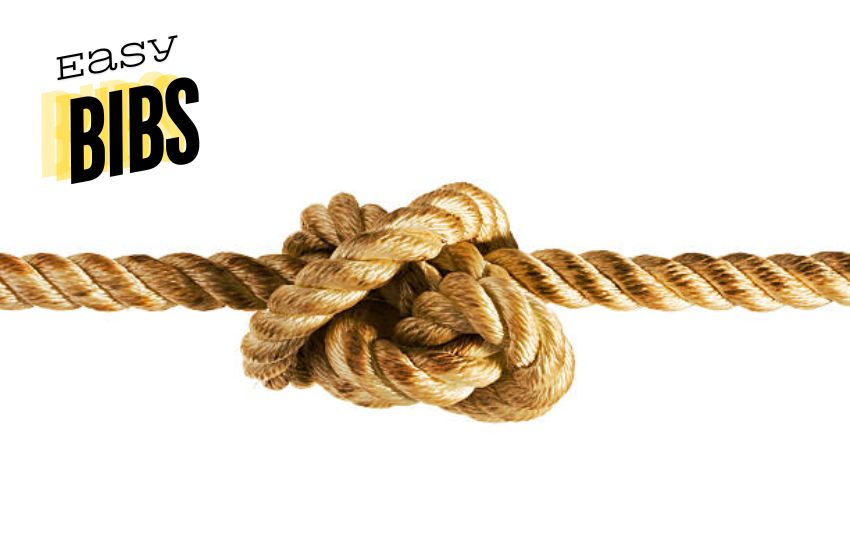Knots have always fascinated humans, serving critical functions in various activities ranging from sailing to climbing and even decorative arts. However, some knots remain shrouded in mystery, such as the pitchfork knot. The question, “is there a pitchfork knot?” often intrigues knot enthusiasts and practical users alike. This article delves deep into the existence and applications of the pitchfork knot, providing a comprehensive overview of this enigmatic knot.
What is the Pitchfork Knot?
The pitchfork knot, as the name suggests, may evoke the image of a pitchfork. However, its exact origins and specific uses remain somewhat elusive. The term itself is not widely recognized in traditional knot-tying literature, which leads to the question: is there a pitchfork knot? This knot could be an adaptation or a variation of existing knots, tailored for particular uses.
Historical Context of the Pitchfork Knot
When exploring whether there is a pitchfork knot, it’s essential to consider the historical context of knot tying. Knot tying has ancient roots, with evidence of knots used by early civilizations for fishing, hunting, and building. The pitchfork knot may well be a modern interpretation or a forgotten traditional knot rediscovered in contemporary times. The absence of the pitchfork knot in older knot manuals suggests that if it exists, it may be a more recent innovation.
Applications of the Pitchfork Knot
Despite the ambiguity surrounding its existence, the concept of the pitchfork knot can be applied in various fields:
Climbing
In climbing, secure and reliable knots are crucial. The pitchfork knot could hypothetically be used to create a secure anchor point or to join two ropes together. Its unique structure would need to provide stability and ease of untying after bearing significant weight, essential qualities for climbing knots.
Fishing
For fishing, knots like the clinch knot and Palomar knot are popular for their strength and ease of tying. If there is a pitchfork knot designed for fishing, it might serve a specialized purpose, such as securing a lure or attaching a line to a hook with added strength and reliability.
Decorative Arts
Knots in decorative arts, such as macramé or nautical decorations, often have unique and intricate designs. The pitchfork knot, with its potential visual appeal, could be a valuable addition to the repertoire of decorative knot tyers. Its name alone suggests a structure that might resemble a pitchfork, adding an element of intrigue and beauty to decorative projects.
Tying the Pitchfork Knot
Assuming there is a pitchfork knot, learning to tie it would be the next step. Here’s a speculative method to tie the pitchfork knot:
- Materials Needed: Rope, cord, or fishing line.
- Step-by-Step Instructions:
- Start with a loop at the end of the rope.
- Pass the working end over the standing part of the rope.
- Bring the working end back under the standing part.
- Repeat the process to form a pitchfork shape.
- Tighten the knot by pulling both ends.
This speculative method aims to create a knot that resembles a pitchfork, though its practical applications would need validation through testing and experience.
Variations and Similar Knots
In the absence of concrete evidence for the pitchfork knot, it’s helpful to consider similar knots that might serve as alternatives or inspirations:
- Bowline Knot: Known for forming a secure loop that doesn’t slip, the bowline is a versatile knot used in sailing and rescue operations.
- Figure-Eight Knot: Commonly used in climbing, this knot is valued for its security and ease of untying.
- Double Fisherman’s Knot: Used to join two ropes together securely, it is favored in climbing and fishing for its strength.
These knots, while not explicitly called pitchfork knots, exhibit qualities that could be attributed to a pitchfork knot if it exists.
Easy Bibs: Exploring Knots and More
As we delve into the question, “is there a pitchfork knot,” it’s essential to highlight the role of platforms like Easy Bibs. Easy Bibs provides insightful articles on various topics, including knot tying, outdoor activities, and practical skills. The exploration of unique and lesser-known knots such as the pitchfork knot aligns with Easy Bibs’ commitment to offering diverse and intriguing content.
Conclusion: Is There a Pitchfork Knot?
In conclusion, the existence of the pitchfork knot remains a topic of speculation and intrigue. While traditional knot-tying literature does not explicitly mention this knot, the concept continues to spark curiosity among enthusiasts. Whether it’s a modern adaptation or a rediscovered traditional knot, the pitchfork knot represents the ever-evolving nature of knot-tying art and science. As Easy Bibs continues to explore such fascinating topics, readers are encouraged to experiment, innovate, and contribute to the rich tapestry of knot-tying knowledge.
By understanding and experimenting with the idea of the pitchfork knot, we contribute to the ongoing dialogue of practical skills and creative endeavors. So, the next time you ask, “is there a pitchfork knot?” remember that the journey of exploration and discovery is just as important as the answer.
Easy Bibs remains dedicated to uncovering and sharing such captivating topics, encouraging readers to embrace curiosity and innovation in all their endeavors.


